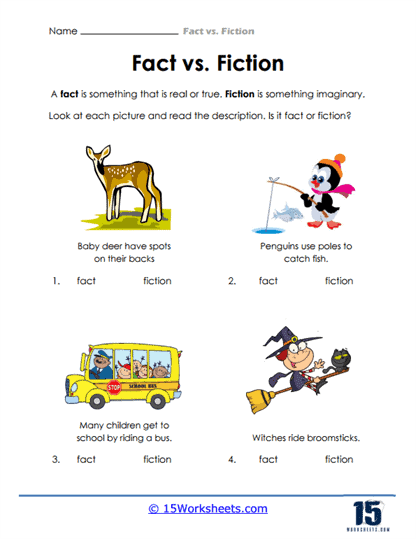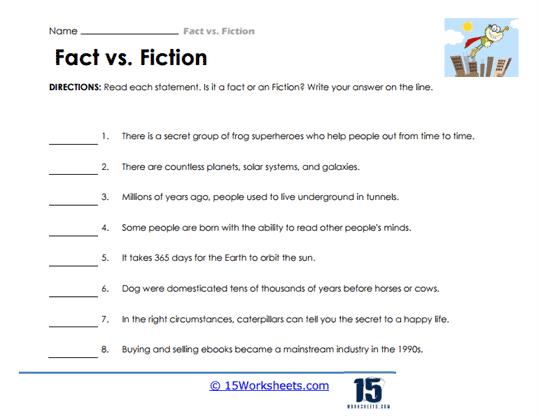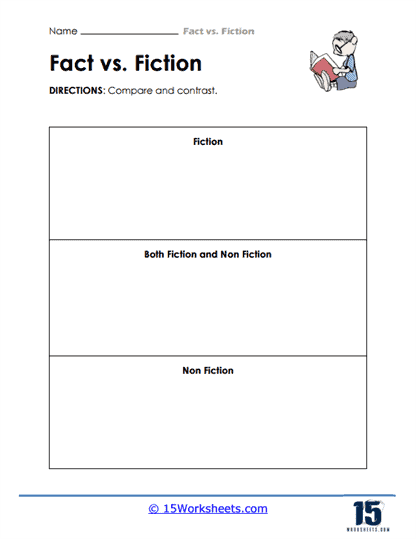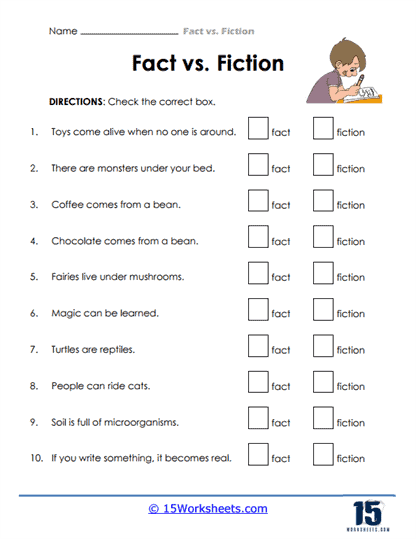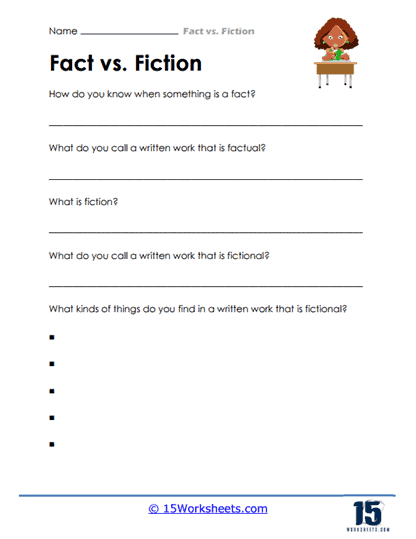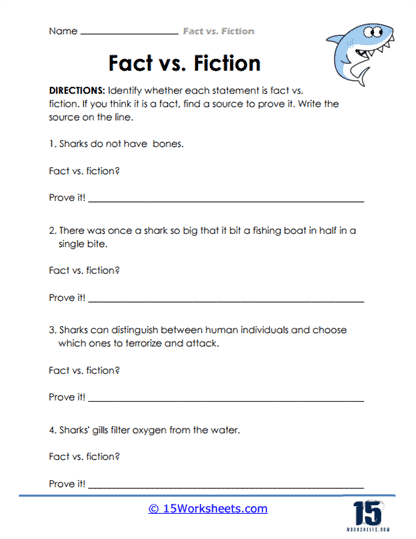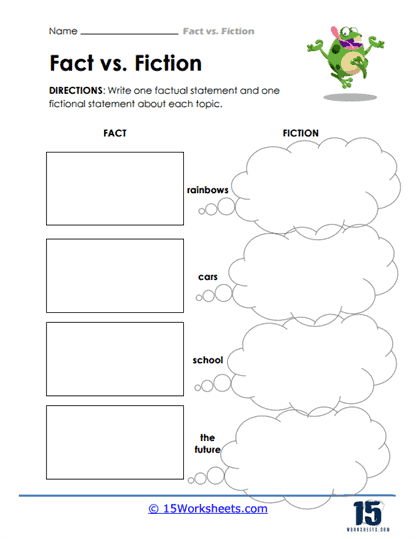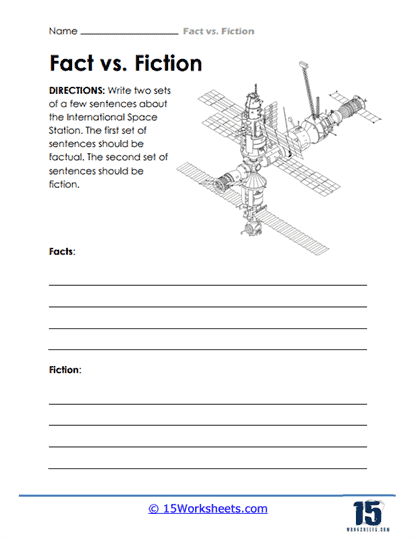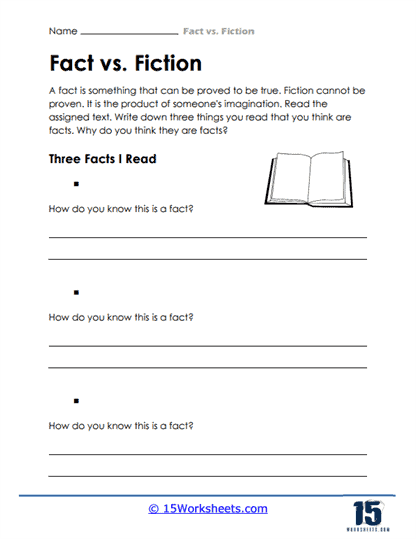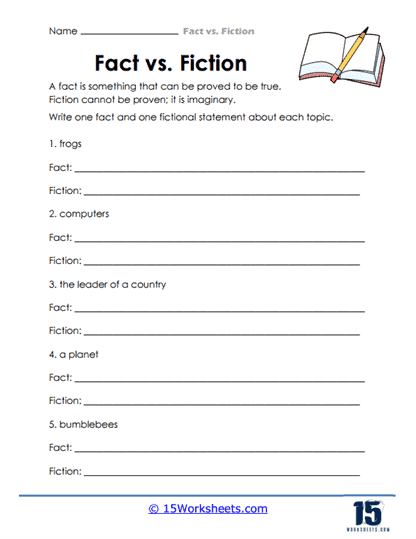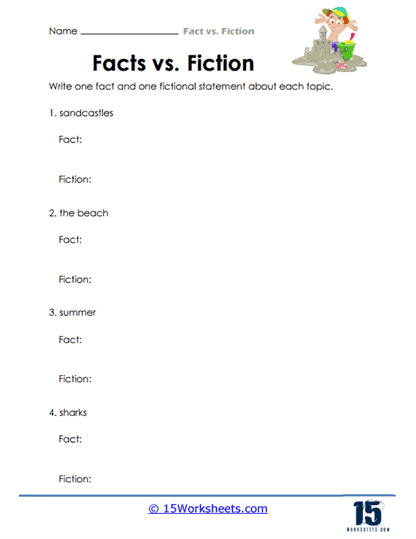Fact or Fiction Worksheets
All About These 15 Worksheets
They are designed to help students differentiate between facts, which are statements that can be proven true or false, and fiction, which refers to statements or information that are invented or imagined. The fundamental aim of these worksheets is to hone students’ critical thinking skills and help them make informed judgments about the information they come across in various text sources.
The relevance and importance of fact or fiction worksheets are quite profound in the contemporary educational landscape. In an era filled with a vast amount of readily accessible information, the ability to distinguish between factual and fictitious information is invaluable. These worksheets provide a training ground for students to develop and hone this skill, enhancing their understanding and interpretation of written content.
They provide several benefits that contribute to improving students’ reading comprehension. For one, they promote active reading, a practice where the reader engages with the text, questioning it and analyzing it, rather than passively consuming it. By constantly questioning whether the information in the text is factual or fictional, students stay engaged and absorb more from what they are reading.
These worksheets also help students develop critical thinking skills. By evaluating the authenticity of the information, students learn to question the sources of the information and the logic behind the statements. This analytical mindset is not only essential for their academic success but also prepares them for real-life situations where decision-making based on verified facts is required.
Fact or fiction worksheets promote an understanding of different genres of text. They expose students to a wide range of text types, including non-fictional texts that provide factual information and fictional texts where the information is created or imagined. This aids in developing a broader understanding of language and literature, as well as a more comprehensive interpretation of text-based information.
These worksheets typically present a series of statements, and the student’s task is to determine whether each statement is true (a fact) or false (fiction). The statements can cover a wide range of topics, such as history, science, literature, current events, and more. The specific types of exercises one might expect to find on Fact or Fiction Worksheets are varied and designed to challenge students at different levels.
True or False – This is a straightforward task where students read a statement and decide whether it’s a fact (true) or fiction (false). It’s a good starting point for beginners.
Story Analysis – Students read a short story or passage and then identify which parts are factual and which parts are fictional. This not only improves their understanding of the text but also their ability to distinguish between fact and fiction.
Source Evaluation – This exercise presents students with information from different sources (books, internet, newspapers, etc.), asking them to determine the credibility of each source and the factuality of the information provided.
Context Clues – In this exercise, students are asked to determine the factuality of a statement based on the surrounding information or context. This helps improve their contextual reading comprehension.
Debate and Discussion – In more advanced exercises, students might be asked to take a position on a potentially controversial topic and defend their stance using facts. They’ll need to differentiate between fact and fiction in their research and arguments, which deepens their understanding of the topic and hones their persuasive skills.
Real vs. Imaginary – Students are provided with scenarios or objects and they have to differentiate whether they exist in real life (fact) or are imaginary (fiction). This exercise can be quite engaging and fosters creative thinking.
Fact or fiction worksheets are designed to promote analytical thinking, research skills, and the ability to evaluate information critically. By engaging in this activity, students learn to differentiate between reliable information and misinformation or misconceptions. It also encourages students to validate statements by conducting further research or referring to credible sources.
How to Tell the Difference Between Fact or Fiction
Telling the difference between fact and fiction in what you read is a vital skill, especially in an era filled with an overflow of information. Here are several strategies to guide you in making this differentiation:
Examine the Source – The first step in identifying fact from fiction is to critically evaluate the source. Reliable sources often have established reputations for accuracy and are typically associated with educational institutions, reputable media outlets, government organizations, or experts in the field. Check the author’s credentials and previous work. However, even reliable sources can make errors or be biased, so it’s important not to rely solely on the source’s reputation.
Check for Evidence – Facts are often supported by empirical evidence such as data, statistics, or research findings. If a piece of information is presented as a fact, there should be evidence backing it up. Conversely, if there is no evidence to support a claim or if the evidence is vague, unreliable, or taken out of context, the claim may be fictitious.
Cross-Verify Information – If you come across a piece of information that you are uncertain about, check it against multiple sources. If the same fact is consistently presented across various credible sources, it’s more likely to be true.
Look for Balanced Perspective – Factual information typically presents a balanced perspective, considering multiple viewpoints and acknowledging the complexity of the topic. On the other hand, a piece that focuses heavily on one side, ignoring or dismissing counterarguments, may contain fictional elements or biases.
Analyze Language and Tone – Facts are usually presented in a straightforward, objective manner. If the language is emotive, uses a lot of adjectives, or seems intended to evoke a specific reaction, it might be more opinion than fact. Also, pay attention to absolute terms like “always,” “never,” “everyone,” etc., as these can be signs of overgeneralization or exaggeration.
Be Aware of Logical Fallacies – Fiction often relies on logical fallacies – flawed reasoning that seems superficially correct but is actually invalid. For example, if an argument rests on the basis that ‘if A happened after B, then B must have caused A’ (known as post hoc ergo propter hoc), it’s likely that it might be fictitious.
Use Fact-Checking Websites – There are various fact-checking websites available (like Snopes, FactCheck.org, and others) that investigate the truthfulness of claims. These can be particularly useful for verifying news stories, viral content, and other widely disseminated information.
Remember, the process of distinguishing fact from fiction is not always straightforward. It involves critical thinking, skepticism, and a willingness to investigate further. It’s a skill that takes practice to develop but is incredibly valuable in today’s information-saturated world.





